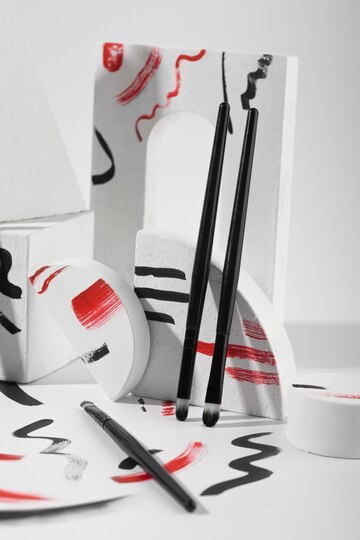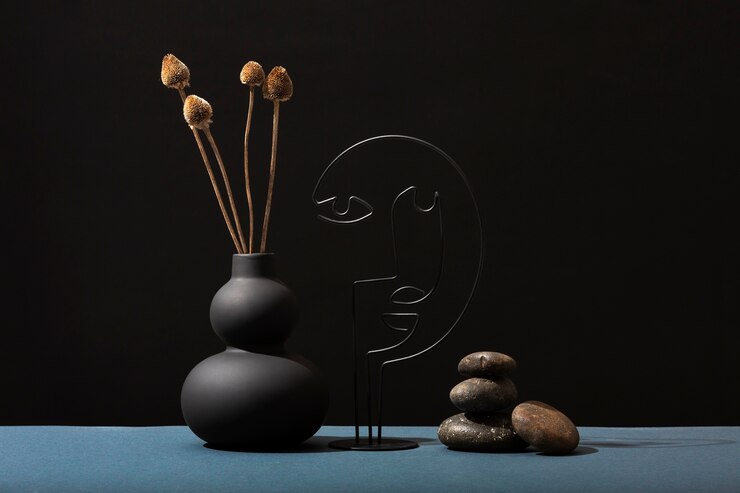Minimalism in Design: The Art of Simplicity
In today’s fast-paced digital world, where we are constantly bombarded with information and visual stimuli, design has become more important than ever. Minimalism in design has emerged as a powerful solution to this overload, offering a clean, simple, and effective way to communicate ideas while maintaining an aesthetic appeal. But what exactly is minimalism in design, and how can it be used to create impactful and engaging visuals? Let’s explore the beauty and power of minimalism in design.
What is Minimalism in Design?
Minimalism in design is an approach that focuses on simplicity, using fewer elements and relying on the essentials to convey the message. It is characterized by clean lines, ample white space, limited color palettes, and a strong emphasis on typography and function. The idea is to strip away the unnecessary, leaving only what is essential for creating a clear, focused, and elegant design.
In minimalistic design, every element is intentional, with a focus on simplicity without sacrificing functionality or visual impact. This approach challenges designers to work with constraints, making each decision count in delivering a clear, effective message.
Key Principles of Minimalism in Design
1. Simplicity
At its core, minimalism embraces the concept of ‘less is more.’ The design focuses on eliminating distractions, leaving only what is necessary. This could mean reducing complex shapes, limiting the color palette, or removing extraneous elements that do not contribute to the overall message or function.
Simplicity allows the audience to focus on the essential parts of the design, making the message more impactful and easily understood.
2. White Space (Negative Space)
One of the most important aspects of minimalism in design is the use of white space, also known as negative space. White space doesn’t necessarily have to be white; it refers to the empty areas surrounding the elements in the design. White space helps to give the design breathing room, making it less overwhelming and easier to digest.
By utilizing white space effectively, a design can feel organized, open, and balanced. It directs the viewer’s attention to important elements without causing visual clutter.
3. Limited Color Palette
Minimalist designs typically use a limited color palette to maintain a clean and cohesive look. Instead of using a wide range of colors, a minimalist design focuses on just a few shades, usually neutral tones with one or two accent colors. This restrained use of color helps to convey a sense of sophistication and clarity.
Choosing the right colors is key to maintaining visual harmony and ensuring that the design doesn’t become too chaotic or overwhelming.
4. Strong Typography
Typography plays a crucial role in minimalist design. Since minimalist designs often rely on fewer visual elements, the typography itself becomes a dominant feature. The choice of font, size, weight, and spacing should be deliberate to ensure readability and alignment with the design’s tone.
Simple, modern, and clean fonts are often preferred in minimalist design, as they reinforce the simplicity and elegance that minimalism embodies.
5. Focus on Functionality
While aesthetics are important, minimalism in design also emphasizes functionality. The design should serve a purpose and provide a seamless user experience. In web design, for example, minimalism ensures that the site is easy to navigate, with clear calls to action and no unnecessary distractions. The design elements should work together to create a smooth, intuitive experience for the user.
Benefits of Minimalism in Design
1. Enhances Clarity and Focus
Minimalist design eliminates visual clutter, allowing the viewer to focus on the most important message or element. By simplifying the design, the audience can more easily process the information being presented, making it more effective and memorable.
2. Timeless and Elegant Aesthetic
Minimalism tends to have a timeless quality. Unlike trendy design styles that may feel outdated in a few years, minimalist designs remain relevant due to their focus on simplicity and clean lines. The elegance of minimalism ensures that the design doesn’t lose its appeal over time.
3. Improved User Experience
In user interface (UI) design, minimalism can lead to an improved user experience by making navigation intuitive and straightforward. The absence of distractions allows users to focus on what’s important, whether it’s reading content, making a purchase, or finding information.
4. Faster Load Times and Better Performance
For web and mobile designs, minimalist layouts often lead to faster load times. Fewer elements mean less data to load, which can improve the performance of a website or app, resulting in a better overall experience for the user.
5. Better Brand Identity
Minimalist design can help establish a strong, memorable brand identity. By focusing on a simple yet distinctive visual language, brands can create designs that are both visually appealing and easy to recognize. Whether it’s a logo, website, or advertising campaign, minimalism ensures that the brand’s message is clear and focused.
How to Implement Minimalism in Your Designs
1. Prioritize the Essentials
When creating a minimalist design, start by identifying the most important elements. What message or idea are you trying to convey? Focus on the essentials and remove anything that doesn’t directly contribute to the purpose of the design.
2. Use Grid Systems
Grid systems help create balance and alignment in minimalist designs. By adhering to a grid, you can ensure that elements are well-spaced and organized, which helps improve readability and structure.
3. Choose Simple, High-Quality Visuals
Use simple visuals that complement the design without overwhelming it. High-quality images, icons, and graphics are crucial in minimalist design. They should support the overall aesthetic and message rather than distract from it.
4. Experiment with Contrast
Playing with contrast can add depth and interest to a minimalist design. This could mean using dark text on a light background or playing with font weights to create emphasis. Contrast helps to make key elements stand out and guides the viewer’s eye.
5. Be Intentional with Color and Typography
As mentioned earlier, color and typography are fundamental to minimalist design. Choose a limited color palette and make sure your typography is clean, modern, and easy to read. These choices should reflect the tone and personality of the brand or message.
Conclusion
Minimalism in design is all about clarity, simplicity, and purpose. By embracing the principles of minimalism—such as using white space, focusing on essential elements, and relying on strong typography—you can create designs that are not only visually appealing but also functional and effective. Minimalist design is timeless, elegant, and impactful, making it a valuable approach for any designer looking to create clean, sophisticated, and memorable visuals.
Whether you’re designing a logo, website, or marketing materials, minimalism can help you communicate your message with clarity and style.




Post Comment